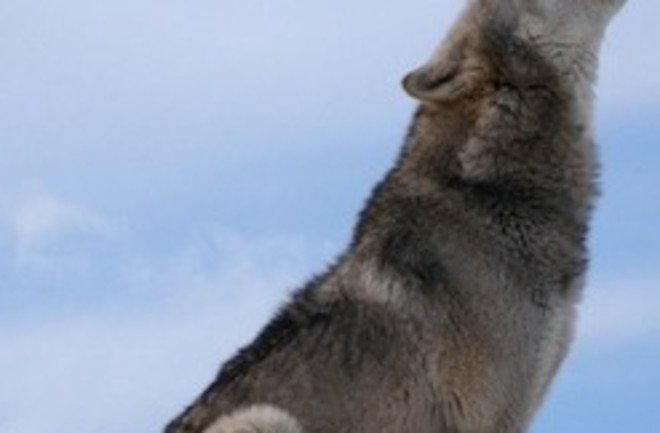A legal battle is raging on over whether gray wolves should be removed from the endangered species list in both the Northern Rockies and the Great Lakes region, with the federal government and environmentalists fighting over whether the wolf populations have recovered. But the situation has been made more complicated by a biological battle over whether the present-day wolves are the same animals, genetically speaking, as the wolves who lived in North American forests hundreds of years ago.
The court cases began when the U.S. Fish and Wildlife Service lifted protections from wolves in the Great Lakes states in 2007, and from wolves in the Rockies earlier this year. Environmental groups contested both decisions. The Great Lakes decision was overturned in September when a judge said the wildlife agency hadn’t followed the law; the Northern Rockies ruling covering the states of Wyoming, Idaho, and Montana was also overturned. After wolves were allowed to be shot on sight across most of Wyoming — and all three states began planning public hunts — U.S. District Judge Donald Molloy in July issued an injunction to block the killings. On Tuesday, Molloy went a step further, restoring the animal’s endangered status [AP]. However, wildlife officials say they’ll try to delist the wolves again in 2009.
The biological complication stems from a genetic study of the Great Lakes wolves conducted by Jennifer Leonard, which showed that these wolves are now genetically distinct from the grey wolves which populated the area before humans cleared the forests. Leonard’s DNA analysis reveals that the wolves have hybridised with coyotes. If wolf-coyote hybridisation in this area follows the same pattern as it has in southern states, grey wolves could be in trouble. “In the southern US, hybridisation is a major threat to the red wolf,” says Leonard. It too is mating with coyotes, and because coyotes outnumber the red wolves, the hybrids are back-crossing with coyotes to the extent that the red wolves could be subsumed into the coyote population [New Scientist]. Leonard sees her findings as an argument for keeping wolves on the endangered species list while more research is done.
But other biologists have found fault with Leonard’s study, and believe that wolf populations are thriving, sustainable, and wolf-like enough to fit the bill. Biologist Tyler Wheeldon recently conducted his own study, and he concludes that the wolf population in the Great Lakes is fairly similar to its make-up in the 1900s, and thus no longer endangered. “Today we have a large top predator which is not coyote-like, which is what they wanted to restore,” says Wheeldon. “If you have a recovered population that is filling the role of the wolf, we shouldn’t worry if it’s exactly what used to be there” [Nature News].
Image: Wikimedia Commons

